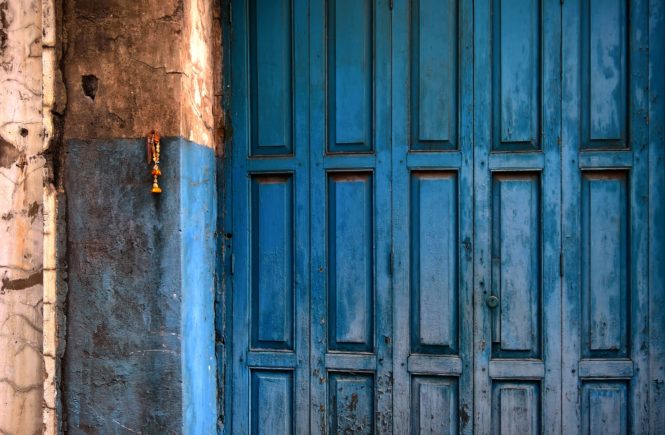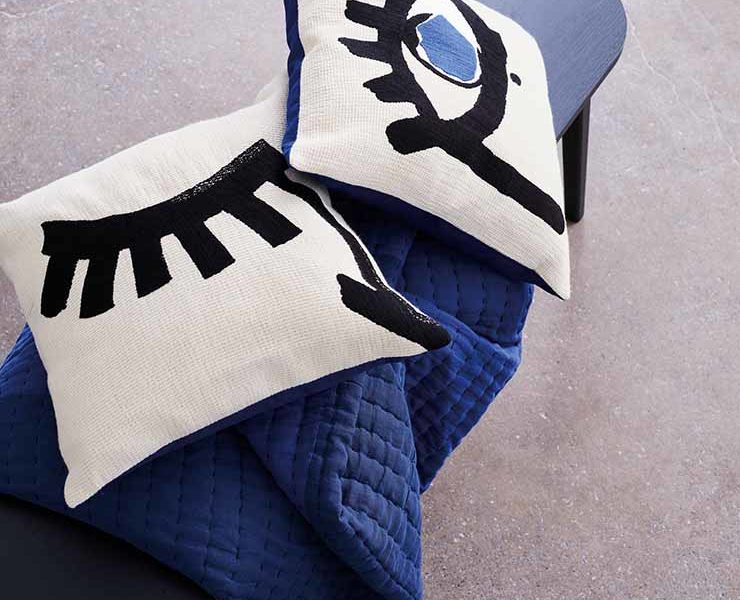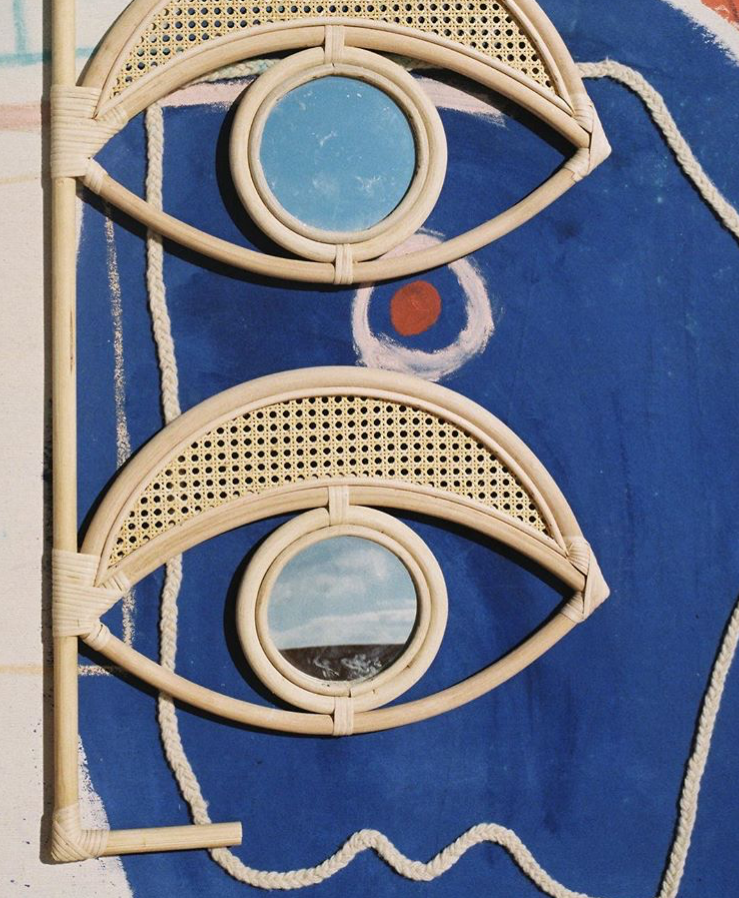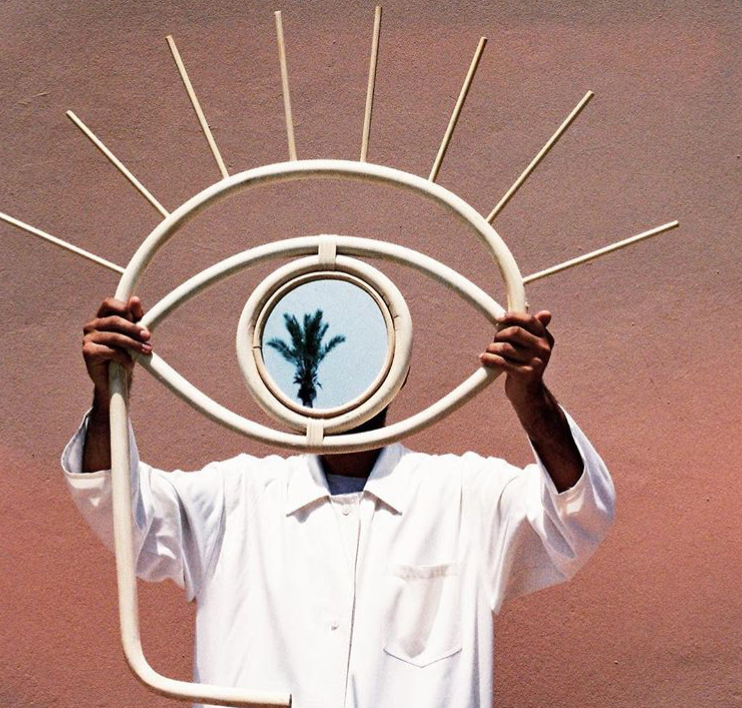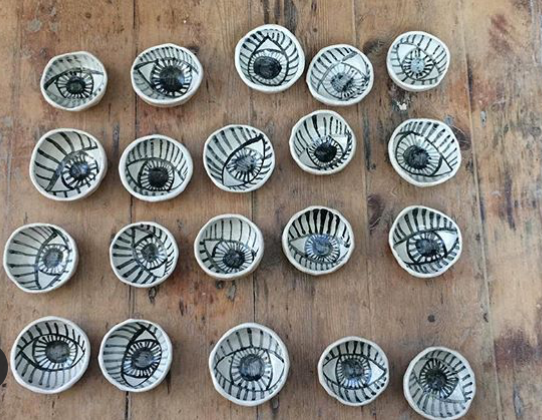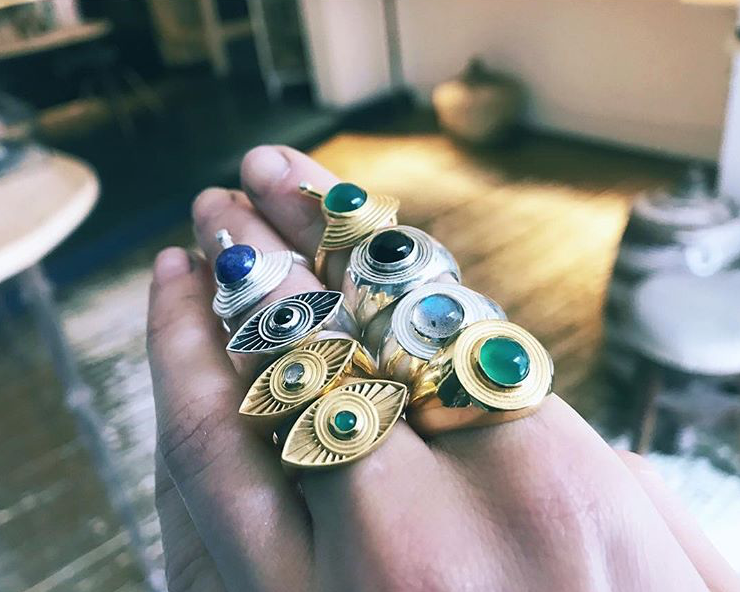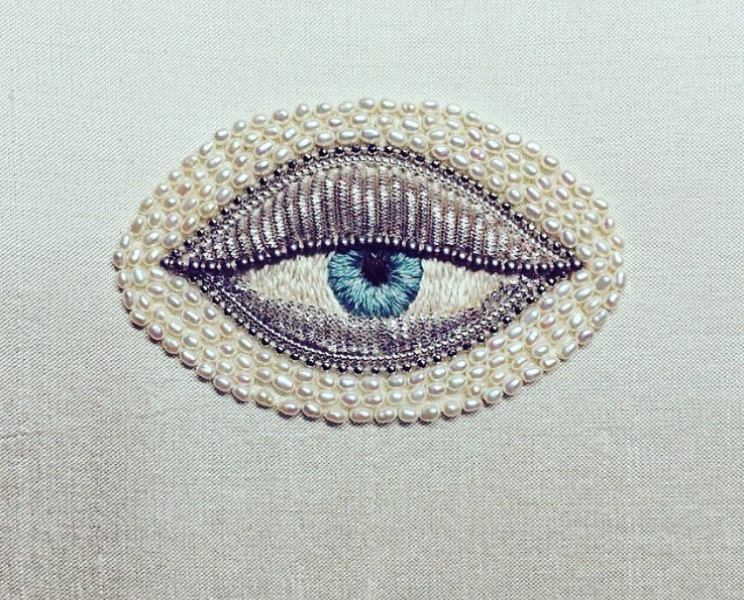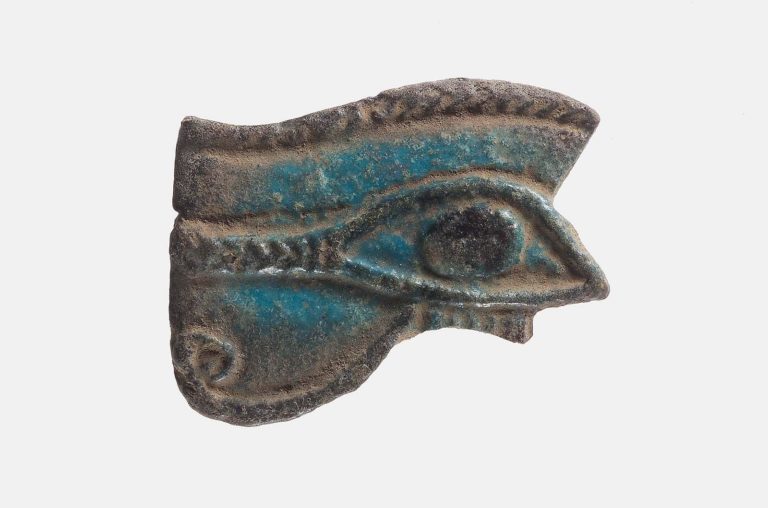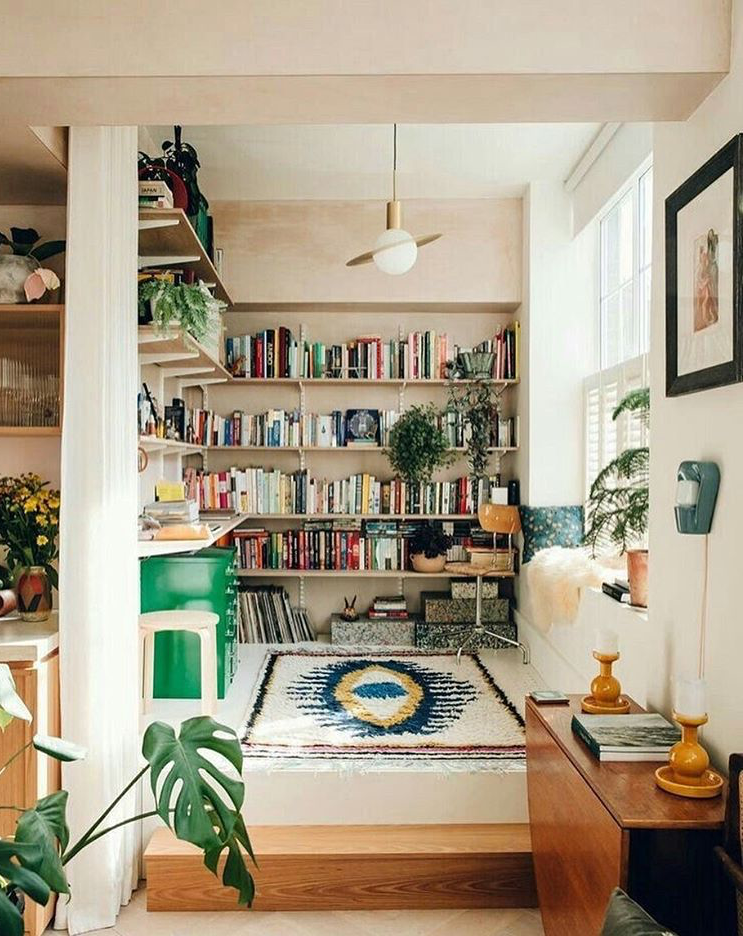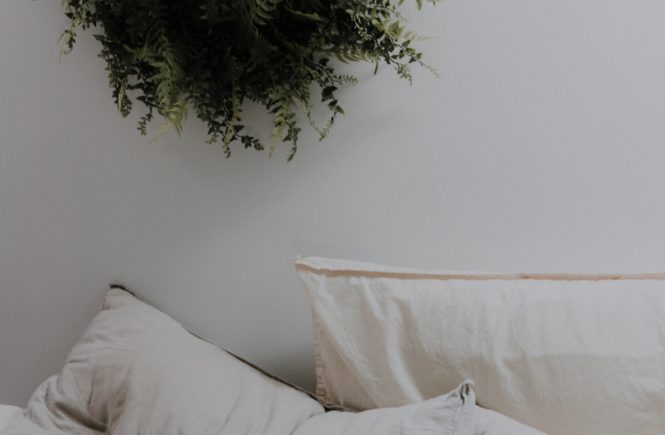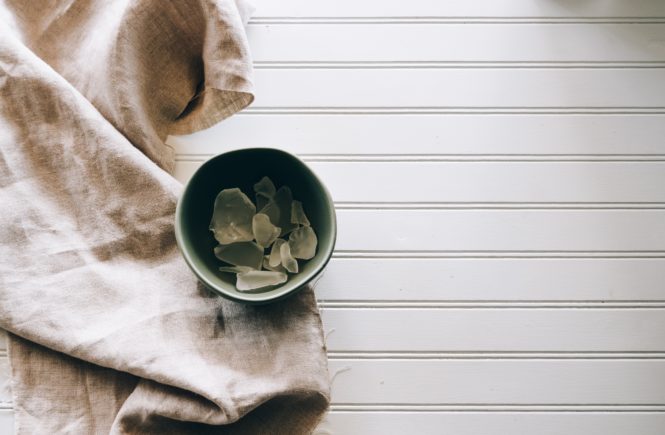“The eye is the jewel of the body”.
Henry David Thoreau
This week the interiors world has been enraptured by the very cool new collection by artist Quentin Jones for Habitat. She has translated her unique style into a covetable collection of rugs and cushions where bold colours and typography give way to fluid freehand lines, centred around the elements of the human face as a central theme in the collection. I was drawn immediately to the cushions emblazoned with expressive eyes, my favourites being the ‘Eye Eye 2’ and ‘Tunnel Vision’ embroidered cushions which feel full of characterful insight and fun.
It’s in the eyes.
It doesn’t surprise me that I am drawn to these two in particular as eyes seem to be a motif I am naturally magnetised to. Perhaps it is the association with the third eye or the ‘ajna’ chakra which is all about harnessing intuition, a daily practice for me – more to strip back external, distracting influences in order to uncover it, rather than looking for something elusive and external. Or perhaps it is a touch of soul-gazing, the piercing recognition of looking deep into an eye and the feeling of simply being seen in return. Or maybe it is a fascination with the talismanic roots of the ‘evil eye’ that has captured my imagination over the years.
My collection.
My collection of ocular-based designs spans bracelet charms of varying quality, a pair of bejewelled heels adorned with a green eye, a hand drawn artwork with an all-seeing eye in the centre of a Hamsa hand, a handful of evil eye amulets picked up from an Israeli market that hang in the entrance to my flat and in my kitchen, a wide-eyed mirror from Graham & Green, and finally the sweetest ceramic by the brilliant Kana London which sits atop my altar.
The origins of the evil eye.
Despite the trend for eye motifs (evil and otherwise) in design and fashion that has gained momentum over recent years, the origin of symbolic decorative eyes dates back thousands of years. It is said that source of the evil eye is rooted in the belief that there is finite amount of abundance to go around and that a malicious or jealous look could bring misfortune to the person on the receiving end of it. Only by wearing an evil eye as an amulet was it possible to ward off the curse, as a means of keeping an eye on the world around you.
I’m not sure how I feel about the fear-based nature of the evil eye and personally prefer to think of it as a protective, healing symbol in my home and on my person.
The symbolic meaning of blue.
Like many of the best things in life (yes I am also thinking of hummus!), the concept transcends religion, race and culture, though early versions are thought to originate from Mesopotamian civilisations as far back 3,300 BC.
One of the first eye design amulets was the Egyptian Eye of Horus, crafted from a turquoise-hued ceramic, the colour representing the regenerative power of the sun. It’s unclear if the Eye of Horus was a precursor to the evil eye but both share vibrant tones of blue, with the evil eye (nazar in Arabic, mati in Greek and ayin ha’ra in Hebrew) taking the form of a glass bead with a black pupil, pale blue iris, white sclera and a deep cobalt blue outer layer.
According to Dr Nese Yildiran, an art history professor at Istanbul’s Bahçeşehir University who spoke to BBC Culture on the subject, early Turkic tribes held a strong fascination with this shade of blue because of its connections with their sky deity, Tengri, and likely adopted the use of cobalt and copper which gave the colour blue when it was baked.
To this day, blue is the world’s favourite colour according to interiors expert, Kate Watson-Smyth who recently wrote about the psychology of blue on her blog Mad About the House. Kate puts its popularity down to its calming effect and its association with communication, reliability and responsibility which helps us to feel safe.
Incidentally, the inky blue shade of the evil eye is not far from the indigo colour connected to the third eye chakra and the seat of our intuition.
Harnessing ancient talismanic power for everyday life.
The fact that the evil eye spans cultures and belief systems might be why the symbol has escaped claims of cultural appropriation and remains a recognised symbol in popular culture today. Its popularity has spread worldwide from local markets and bazaars to celebrated design brands and couture fashion houses with French luxury fashion house Kenzo declaring the eye motif as “an emblem for the modern era of the house”.
The evil eye continues to hold a fascination across generations, media and culture and I wonder if its latest resurgence could be linked to a period of global instability, the rise of apparent malevolent forces in power worldwide and the reliance on social media where comparison and scrutiny go hand in hand.
I hope that we can harness the power of the eye to look at ourselves and others from a place of kindness, strength and abundance rather than of fear or lack. And that we use the ancient talismanic power to tap back into our own intuition to provide protection and guardianship of our homes and of our own healing.
